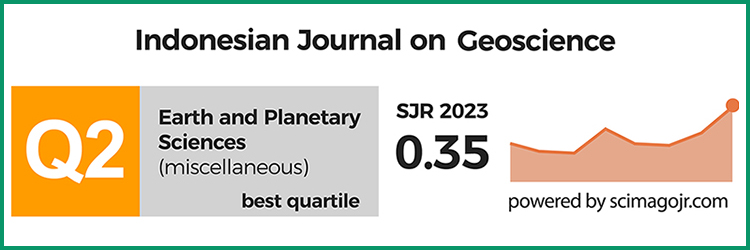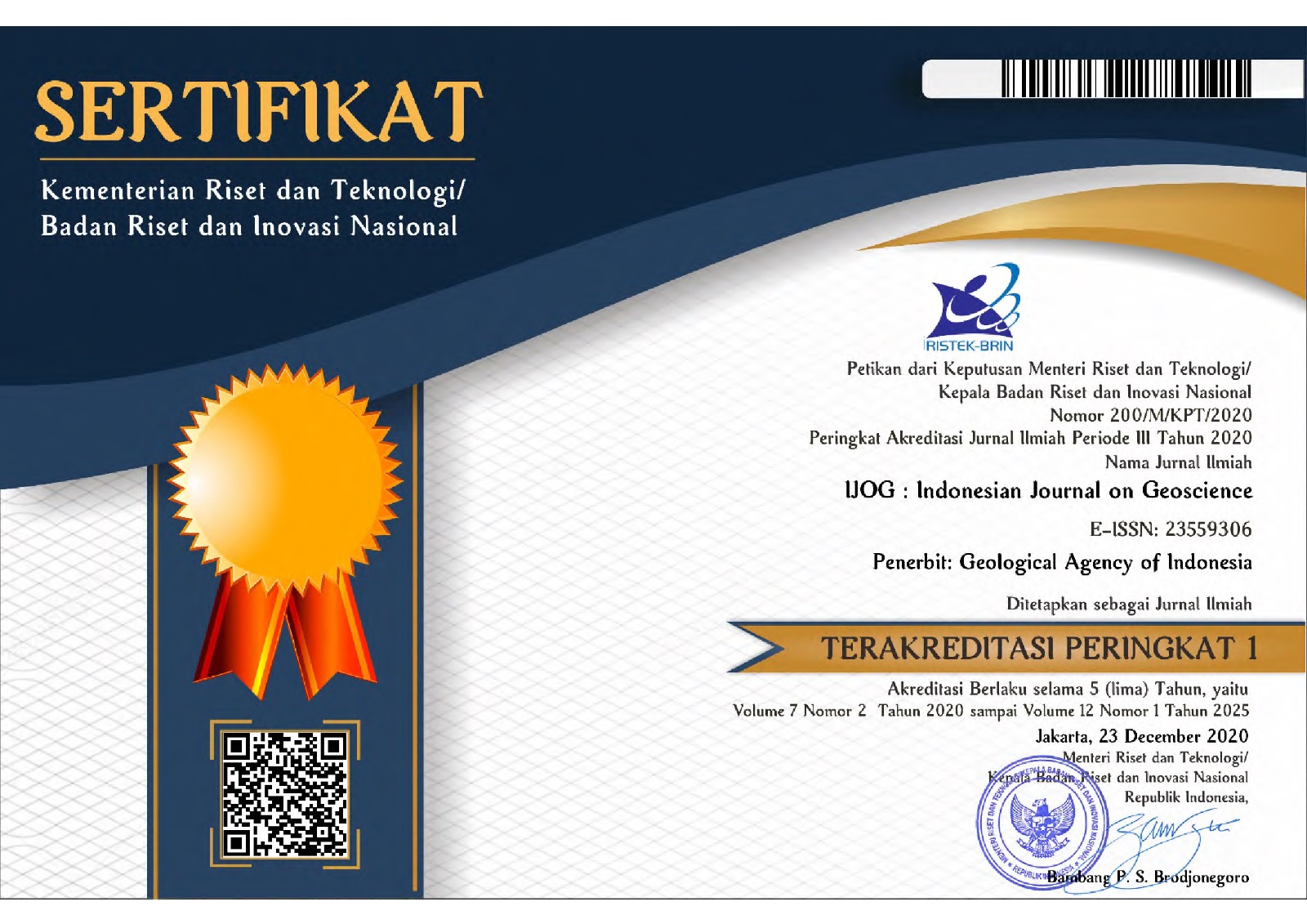Komatiitic Lamprophyre in West Sulawesi: First Evidence for >1350°C and 3.5 - 3.8 GPa Mantle Melts
DOI:
https://doi.org/10.17014/ijog.8.1.39-58Keywords:
komatiitic lamprophyre, mantle melts, soshhonitic, suprasubduction alkaline-arcAbstract
DOI: 10.17014/ijog.8.1.39-58
The presence of lamprophyric lavas of Late Cenozoic in Talaya Volcanic Formation at the boundary between the subregencies of Mamuju and Tabulahan (Western Sulawesi) associated with the mantle enrichment rocks of the Adang Volcanics is the subject of this study. Petrologically, lamprophyre is composed of orthopyroxene (enstatite), clinopyroxene (augite), biotite, leucite, amphibole, magnetite, and autometasomatism of chlorite in grain minerals and groundmass. The lamprophyre is classified into monchiquite shoshonitic lamprophyre, and it has a komatiitic composition with the ratio of MgO/Al2O3 > 0.7906 (in wt %). The komatiitic monchiquite lamprophyre is characterized by high MgO (10.02 - 12.67 %), relatively low alumina (Al2O3= 10.98 - 11.70 %), SiO2= 46.43 - 47.8 %, TiO2 (0.84 - 1.00 %), FeOt (7.75 - 7.88 %), and relatively high content of alkaline (Na2O: 2.20 - 2.59 %; K2O: 1.58 - 2.45 %; Total alkali: 4.00 - 4.89 %, and CaO (9.29 - 10.71 %). The geochemical trace element plots using various diagrams suggests the geotectonic setting of the lamprophyric rock was formed in suprasubduction alkaline continental-arc, and the proposed source of magmatism comes from the suprasubduction activities from the east. The protolith of magma was originated from partial melting of depleted MORB mantle (DMM), composed of pyroxene-peridotite (garnet-lherzolite). The partial melting conditions are suggested to occur at high pressure (3.5 - 3.8 GPa) and the depth of ~120 km with melting temperature of >1350°C, and the magma is dominantly controlled by olivine fractional crystallization.



















